G&G’s Beginner Series: Taking the Plunge
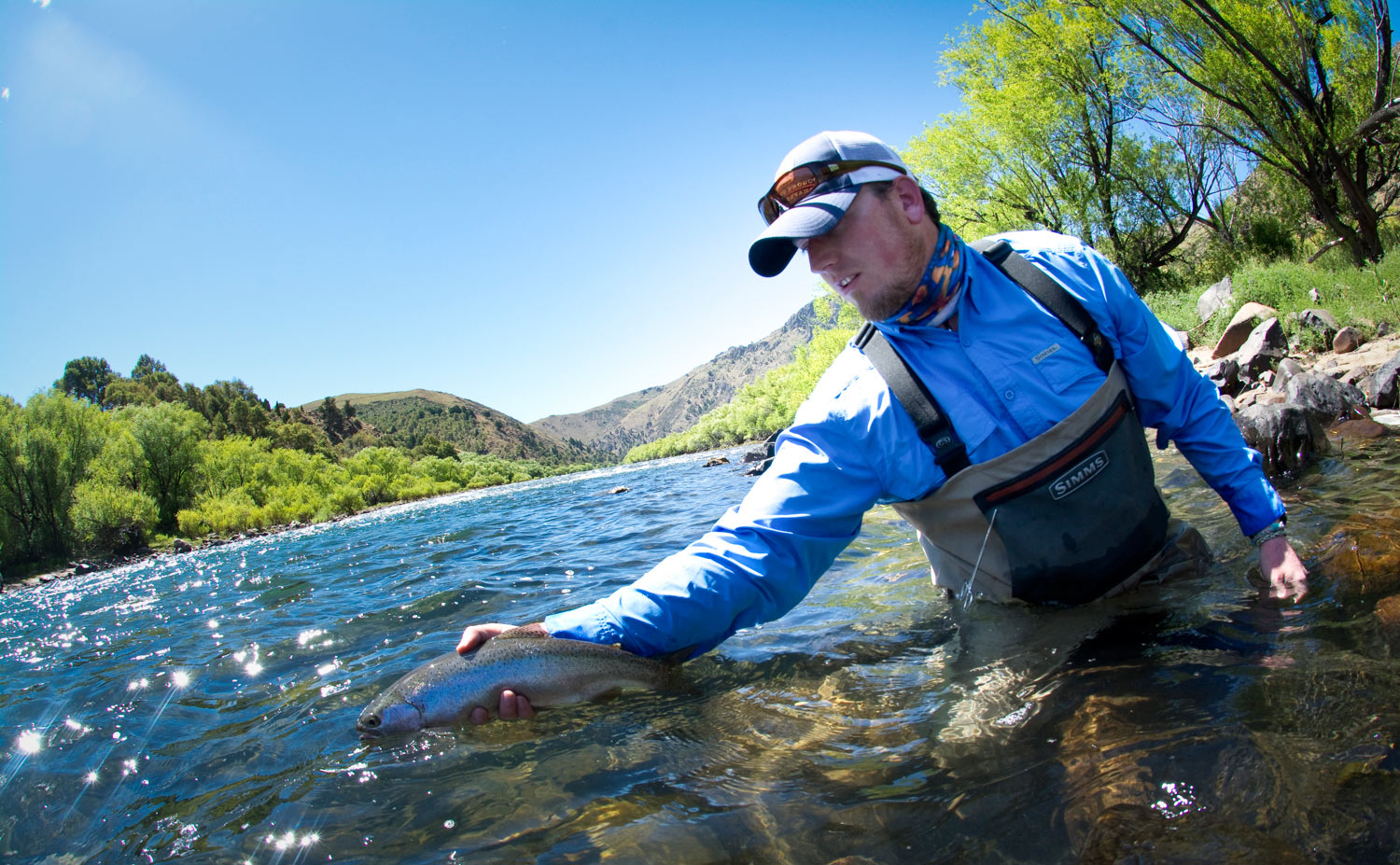
By Justin Pickett
As a beginner in the fly fishing world, it’s easy to get overwhelmed.
And confused and while meandering aimlessly through a fly shop, or magazine, or a “big box” sporting goods store. The thought, “where the hell do I start”, probably runs across just about every beginner’s mind as they try to figure out the best way to step onto the fly fishing scene. I know I had similar thoughts when getting into fly fishing many years ago.
Orvis, Cabelas, and BassPro catalogues were my only real tools for taking on the daunting task of figuring things out. Websites like Youtube and Vimeo didn’t exist, so there were no how-to videos, gear reviews, or podcasts. What the heck is tippet??? You basically learned from other fishermen, or from what you read in a book or magazine. I didn’t have any relatives that were avid fly anglers. I had an uncle who loved bass fishing, and I had been with him several times.
When I was very young, my parents purchased a small lot in the back of a cove on Lake Sinclair where I grew up drowning worms. So yea, I had plenty of experience fishing, but fly fishing might as well have been another language. Yet, something drew me to pursue it. The thought of the skill involved and the elegance of the fly cast itself. The ability to toss dry flies and poppers to bluegill and bass sounded like endless fun. And, to me, the challenge of learning how to catch trout on the fly while wading a river or stream sounded awesome.
So, where would I start? How would I put together the skills and gear needed in order to be successful and have fun while learning how to fly fish? Well, I quite literally had to just figure things out through trial and error. Quite honestly some of the only footage of fly casting that I had access to was an old recorded VCR taping of ….. yes…. A River Runs Through It…. But that’s what I had so I made it work.
No worries though.
Fortunately, you beginners these days have copious amounts of resources to use for your learning needs. Just about any how-to video, gear review, podcast, or written article is at your fingertips. This series of articles will be focused on how you can get yourself what you need to have fun out on the water and learn how to fly fish. What’s necessary, and what’s not. Useful resources and insight on recommended gear that won’t break the bank. Whether it be trout, bass, striper, carp, redfish, tarpon, or (heaven help you) permit, we’ll do our best to give you the tools you need to be a successful fly angler.
FOR NOW, HERE ARE SOME RESOURCES TO GET THE WHEELS TURNING.
Read More »The Virtues of the Single Spey
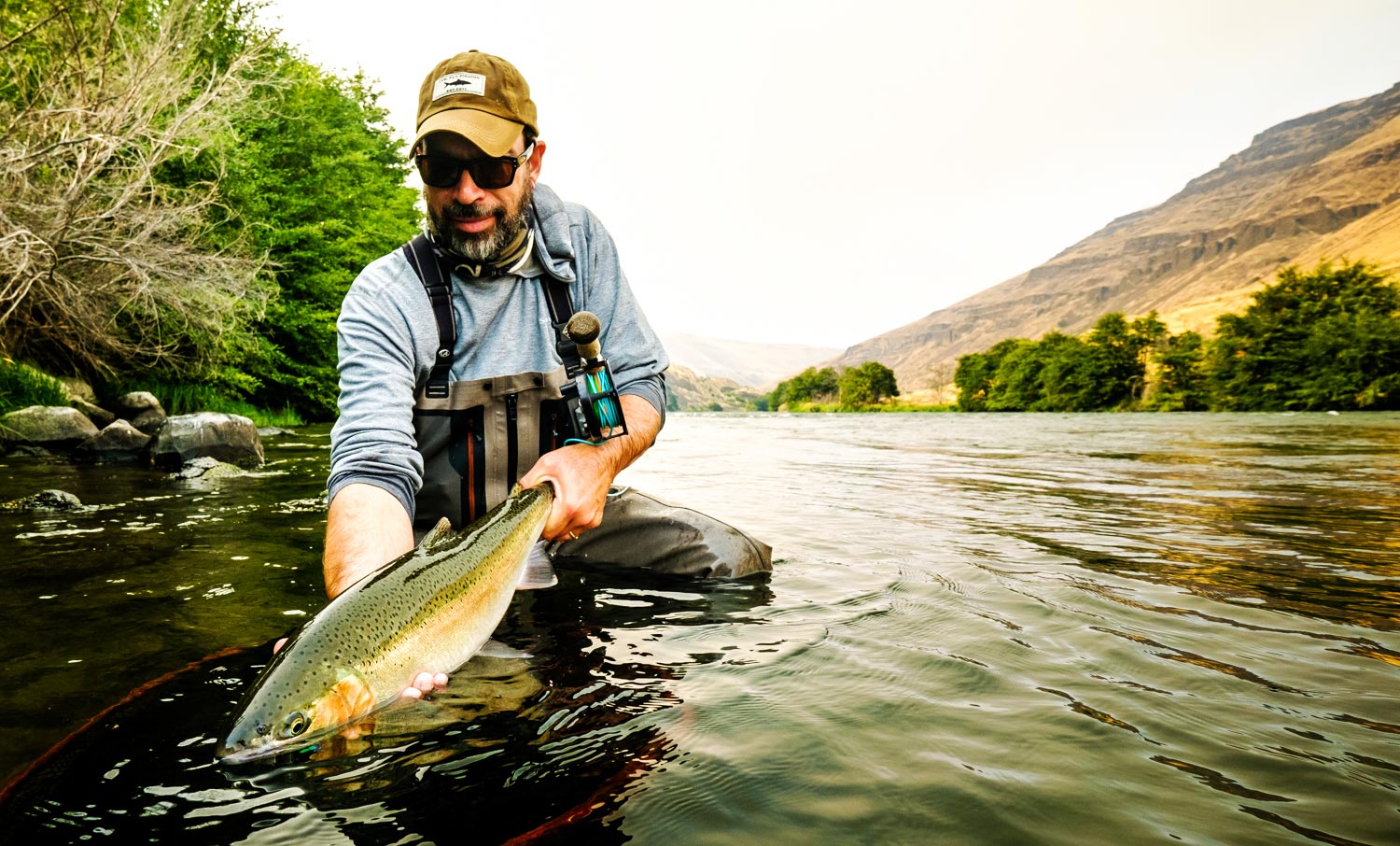
The Single Spey is one of the most efficient, and most overlooked, casts for the two-hand fly rod.
Like a lot of anglers who picked up the spey rod to target steelhead, much of my early fishing focused on Skagit techniques. I spent my time perfecting the Snap T and Double Spey in the standard and off shoulder forms and pretty much got by with that. Later I added a Snake Roll for when things are tight but for years the only time I used the Single Spey was when working out my head. As I spent more time fishing Scandi style lines and traditional flies, I realized I was missing out by not using the Single Spey. I also realized I had never really mastered it.
THERE ARE SEVERAL GOOD REASONS TO USE THE SINGLE SPEY OVER A CAST WITH A WATERBORNE ANCHOR.
First, it’s just more efficient. There are fewer steps and less wasted motion than in Skagit casting. Skagit casting is great when you need to lift a heavy sink tip, but when you are fishing a floating line you don’t need all of that power. A Single Spey is requires less effort and saves you energy, so it’s less fatiguing.
It’s also much quicker. Not that we are out swinging flies because we are in a hurry, but it does get you through the run faster, which can be a good thing. If for instance you are trying to squeeze in one last run before dark, you’ll spend half the time casting with the Single Spey.
The Single Spey can also be a big help when the wind picks up. With a waterborne cast like a Double Spey, it’s hard to generate line speed without blowing your anchor. The slower pace of the cast allows the wind to carry your line, often making it hard to form a good D-loop and killing your cast before it’s even launched.
Since the Single Spey is a touch-and-go cast, it’s easy to step up the tempo while still making a good D-loop. It also allows you more line speed on the forward cast, which helps you land the line and leader straight. Even in the wind.
The more I use the Single Spey, the more applications I find for it. It may be one of the oldest two-hand casts but it has not outlived it’s usefulness. It’s worth taking the time to learn to do it well.
The real key to this cast is
Read More »Restore an Old Bamboo Fly Rod #3: Video Series
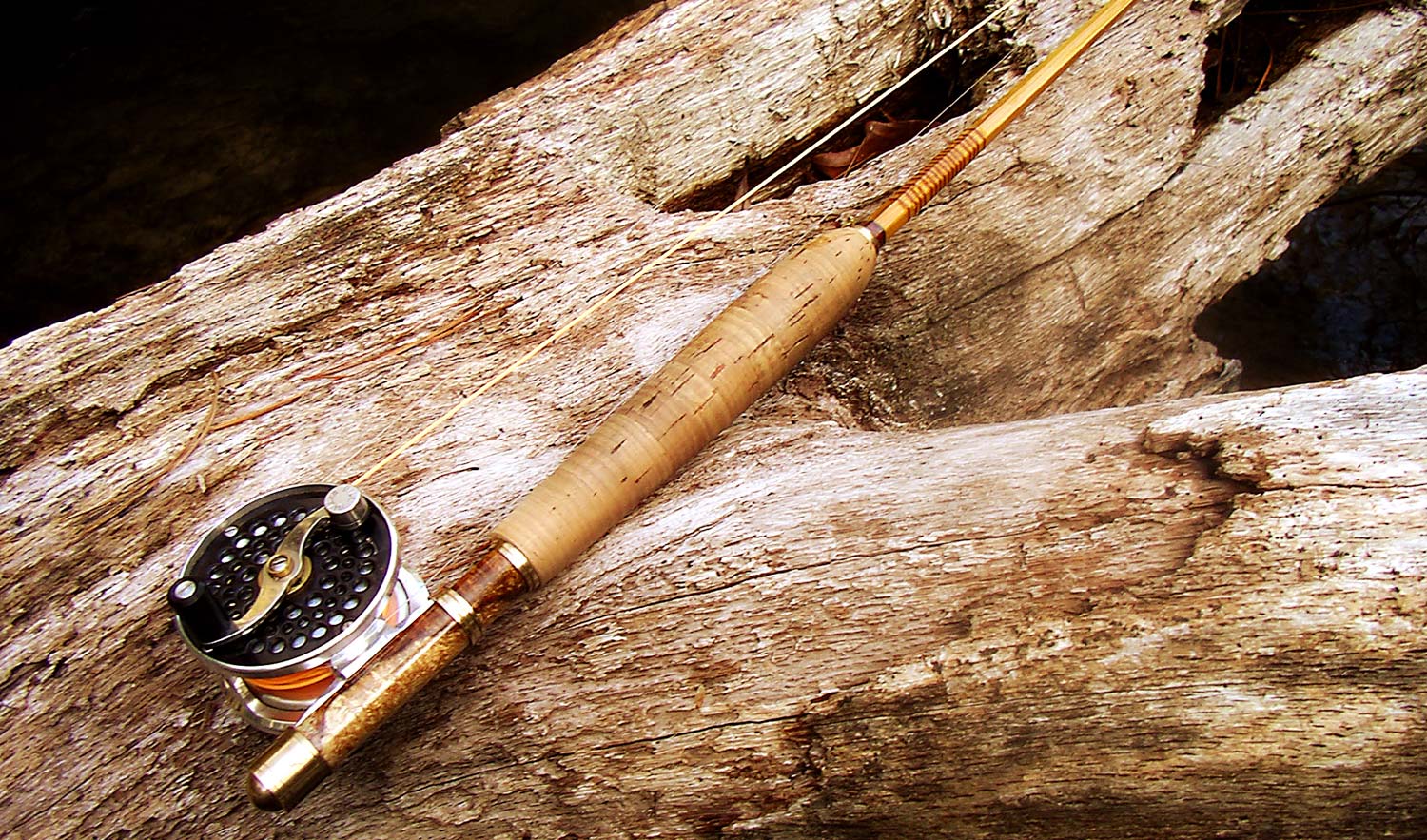
Matt Draft is back for part three of our video series on how to restore an old bamboo fly rod.
Today Matt goes over removing old components like guides, wraps and reel seats. He takes on a worst case reel seat removal before stripping the old varnish and prepping the rod for new parts and finish.
RESTORE AN OLD BAMBOO FLY ROD $3
Check out https://www.proofflyfishing.com
Read More »Adjusting your rig
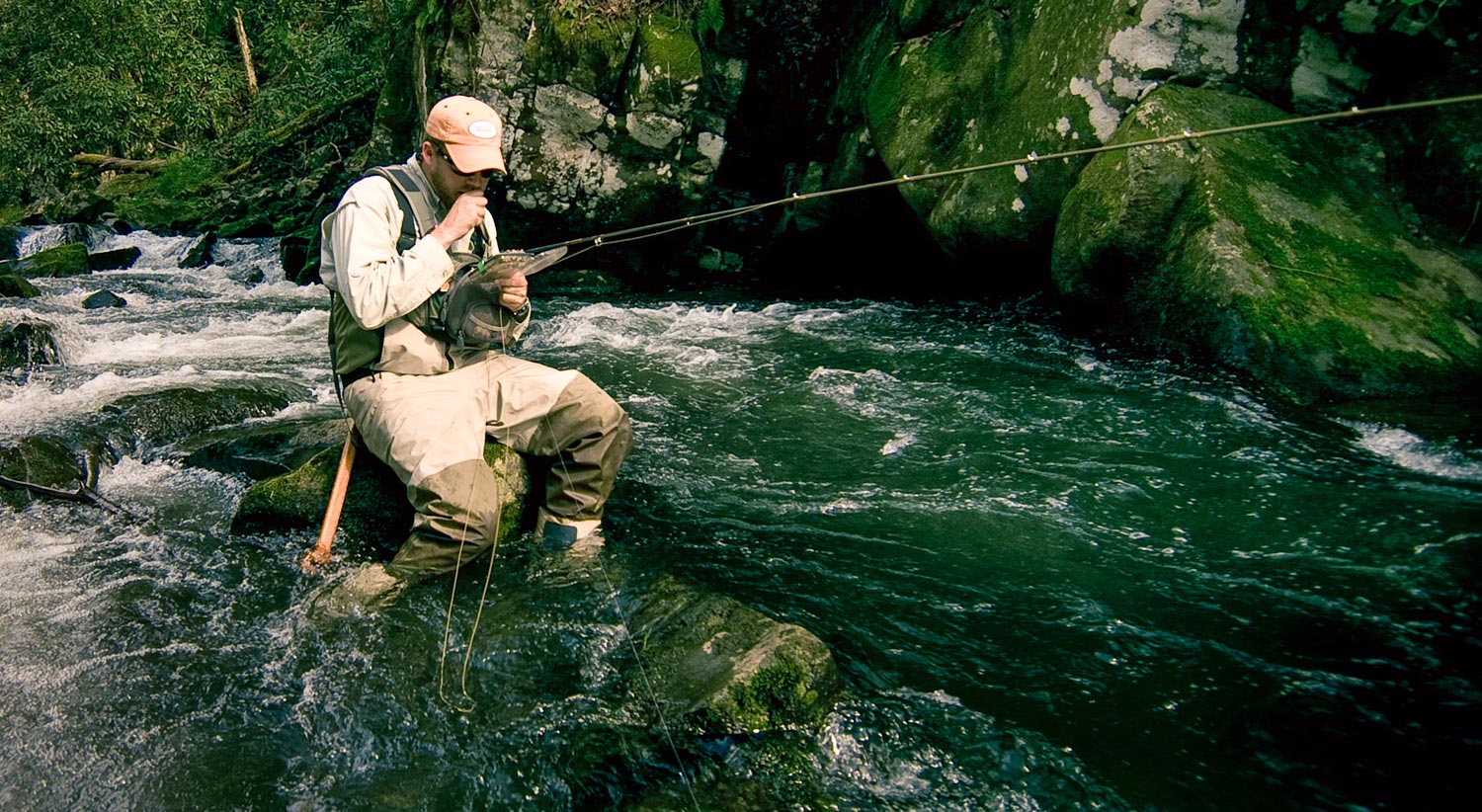
By Dan Fraiser
I’M STANDING ON THE BANK WATCHING THE BOTTOM FALL OUT OF THE STREAM AND A DARK ABYSS FORM WHERE THERE ONCE WAS STREAM BOTTOM.
The currents are right and the undercut bank is textbook. I know there are fish in there like I know putting my head under water would make breathing hard. It’s just obvious. I know that I don’t have enough weight on, that my dropper needs a tandem fly, that my hopper needs to go and be replaced with a strike indicator and that I need to dig the shot out of my pack. I know it, but that seems like so much work and the fish are right there. So I spend 10 minutes working the run without a strike. Casting and mending and trying to work the margins where I might be deep enough. Eventually, I give up and tear down my rig, put on all the right stuff and immediately start catching.
This unwillingness to change set-ups is a real problem for me. I’ll try to make do with what’s on, only to eventually cave and do it right. It feels like re-rigging would take up so much of my fishing time. Forget that mistake. I timed it tonight. To go from a bare tippet to a two fly rig, complete with shot and an indicator took me 2 minutes and 22 seconds… and I’m slow. I waste more time fishing a rig that isn’t right, just because it’s on, than it would cost me to just get it right and start catching. And who knows how many fish I spooked or made shy before I made the change.
Ignoring the time wasted fishing wrong, let’s just think about this. If you
Read More »Regarding The River
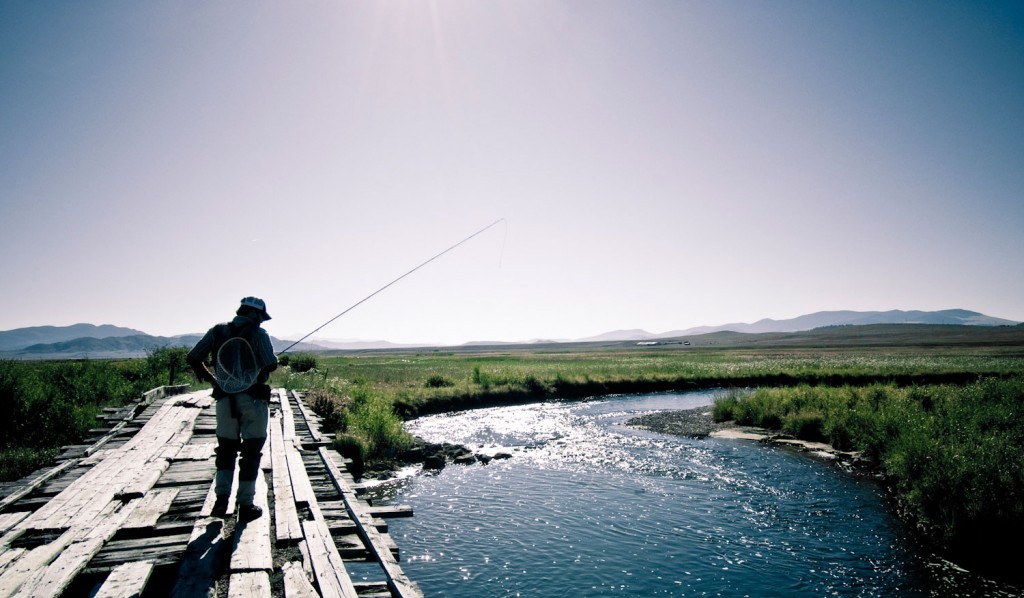
WHAT CAN I TELL YOU ABOUT HER? THE ONE THAT I LOVE.
The one with whom I have left my heart. Dark and lovely. Moody and sullen, she gives little away. Sometimes capricious, never predictable, she keeps me in wonder, in awe. She keeps me for herself. She heeds no man. Selfish, she takes what she wants and wastes not the time to covet. She seeks out the low places, the dark and shady places. She keeps their secrets. I look into her face and I see only the sky.
She knows me. She washes over me, runs through me. She thrills me, frightens me. She gives me peace, makes me whole. She asked nothing from me and she receives it. I have given her my life and she has returned it. I enter her and she remains inside me when I go. She owns me and of her, I know almost nothing. She carves the earth in her image. She carves my soul.
I see her, sometimes when I least expect her. She takes
Read More »Don’t Get Bold Feet!

By Justin Pickett
A few weeks ago I was sitting on the back of my jeep, getting ready to hit the water.
Just like any other day, I grabbed my rods and rigged them up first and laid them across the roof. I tossed my fly boxes in my chest pack and made sure I had all the tools and tippet that I needed. I jumped into my waders and buckled myself in for the day. Grabbed my left wading boot and slipped it on and tightened it up. Reached down for the right one and began to slide my foot into the boot. Before I could get my foot settled into the boot I felt quite the bulge in the toe of my boot. Not knowing exactly what it was, and knowing what it could be, I quickly kicked the boot from my foot. My wading boot landed on the grass, just a few feet in front of me. I waited a few seconds to see if anything crawled, hopped, or slithered out from it.
Nothing.
Cautiously, I picked up the boot and held it upside down, and, immediately, something fell from the boot
Read More »7 Easy Steps To Successful Saltwater Fly-Fishing: Video Round-up
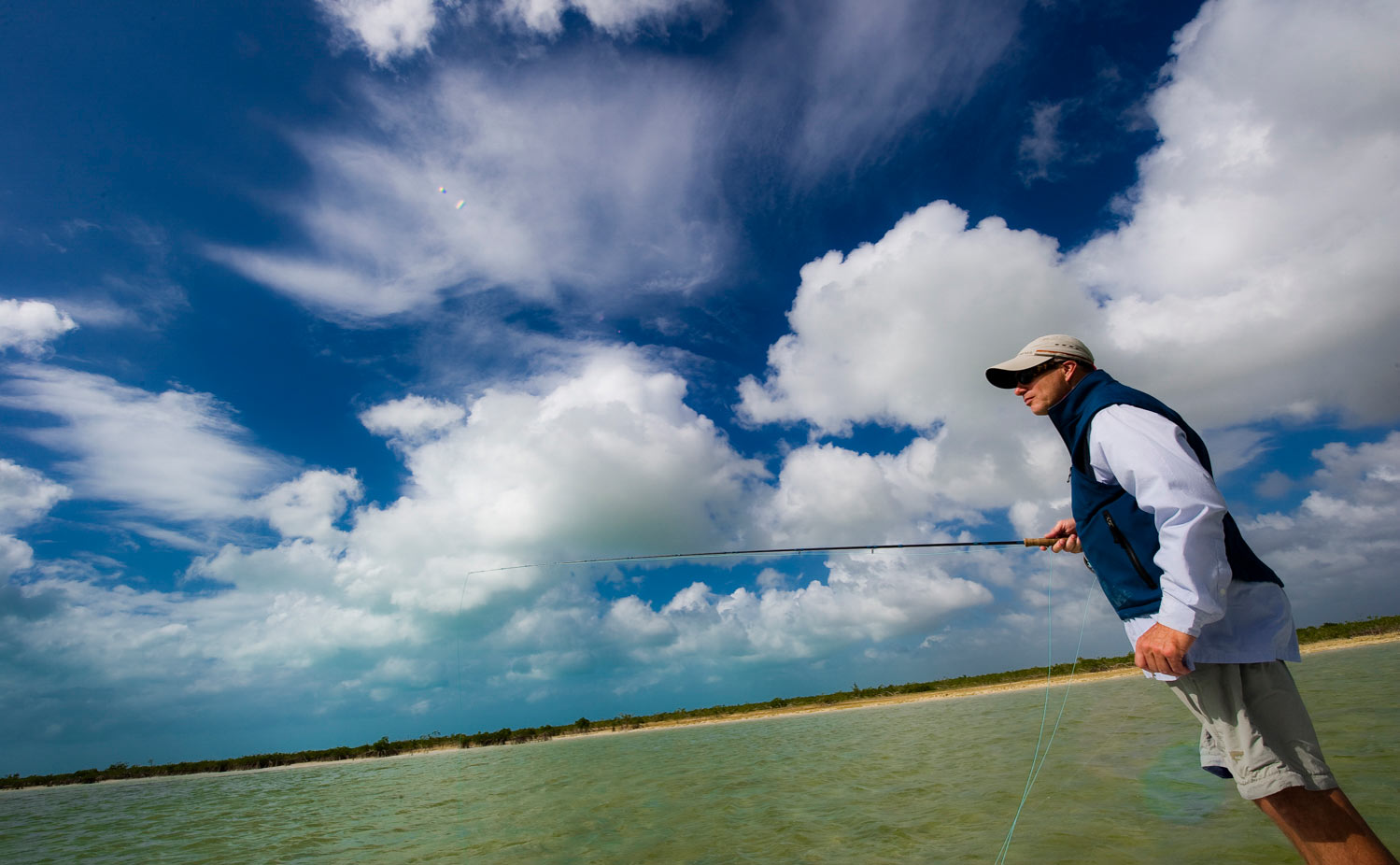
Let’s review some basic skills you need to get started catching fish on the fly in saltwater.
Success in saltwater fly fishing is all about the fundamentals. If you understand and practice the fundamental skills you will catch fish. There is a lifetime of learning but once you have the basic skills it’s a blast learning the rest.
Saltwater fly fishing doesn’t have to be daunting. Any angler can learn and today we’re going to review the skills you need for some great days on the water. Skills simple enough for any angler to understand and put into practice.
7 VIDEOS TO HELP YOU CATCH FISH ON THE FLY IN SALTWATER
Let’s start with the most basic and likely most important aspect of saltwater fly fishing, communicating with your guide. Understanding the
Read More »Handling Trout in Cold Weather
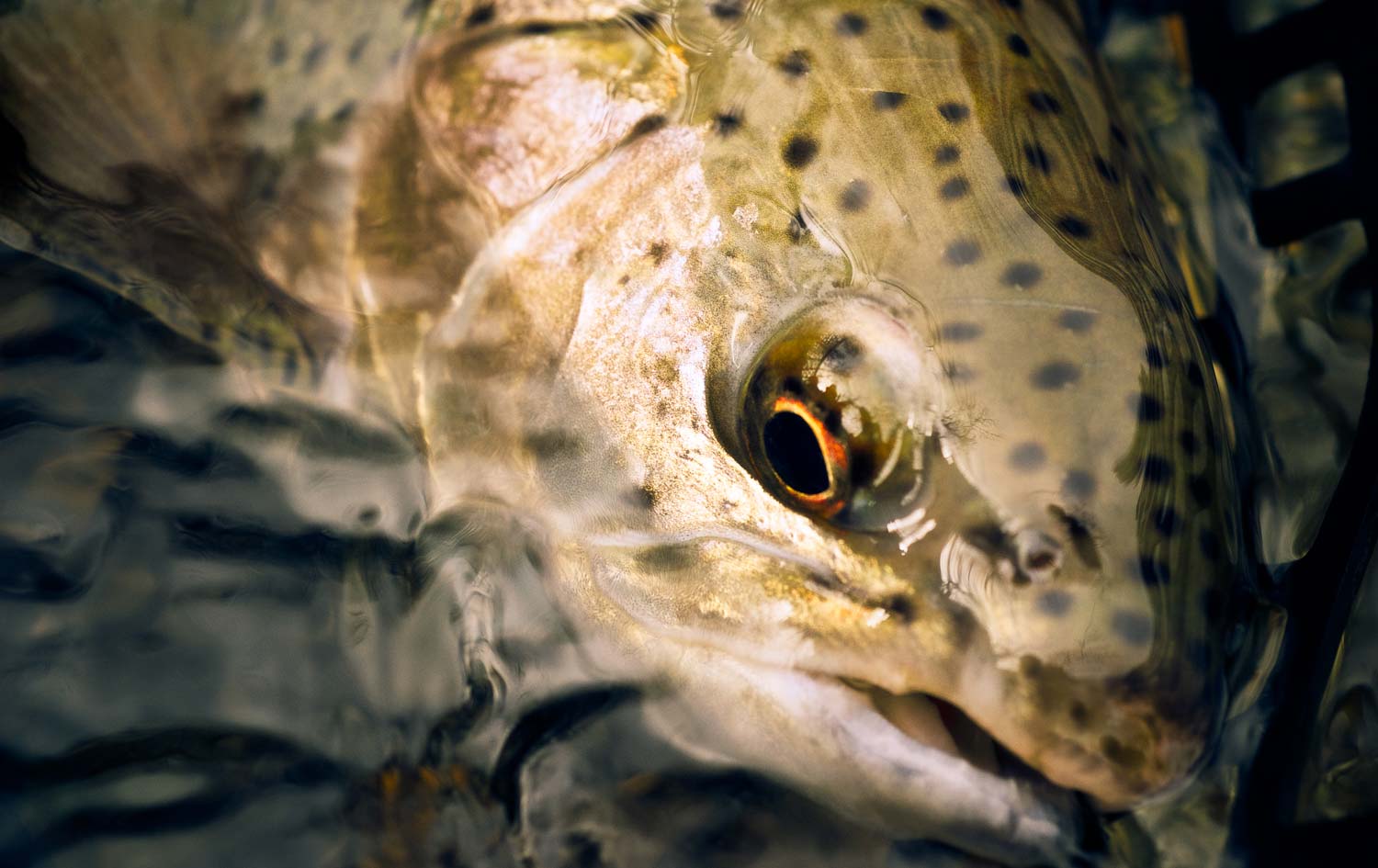
Handling trout in cold weather requires special care.
When temperatures drop below freezing good catch-and-release practices become critical. We think of trout as needing special handling care when water temperatures are high, but fish are just as vulnerable when air temperatures are low. Mishandling fish in cold weather can easily be fatal.
Fish are, of course, cold blooded. They’re bodies do not produce heat like ours do and this leaves them especially vulnerable to frostbite. The fragile tissues of their gils can freeze in an instant when air temps are below freezing. Again, they have no body temperature to stabilize their cells, so it happens quickly.
We adapt very well to cold temperatures. We have evolved to survive wide temperature swings. Fish on the other hand have evolved in a world which never drops below freezing, so taking them out in the cold air is as alien to them as dropping us on the surface of Mars.
The solution is simple.
Read More »Stealth For Trout- Stand Still
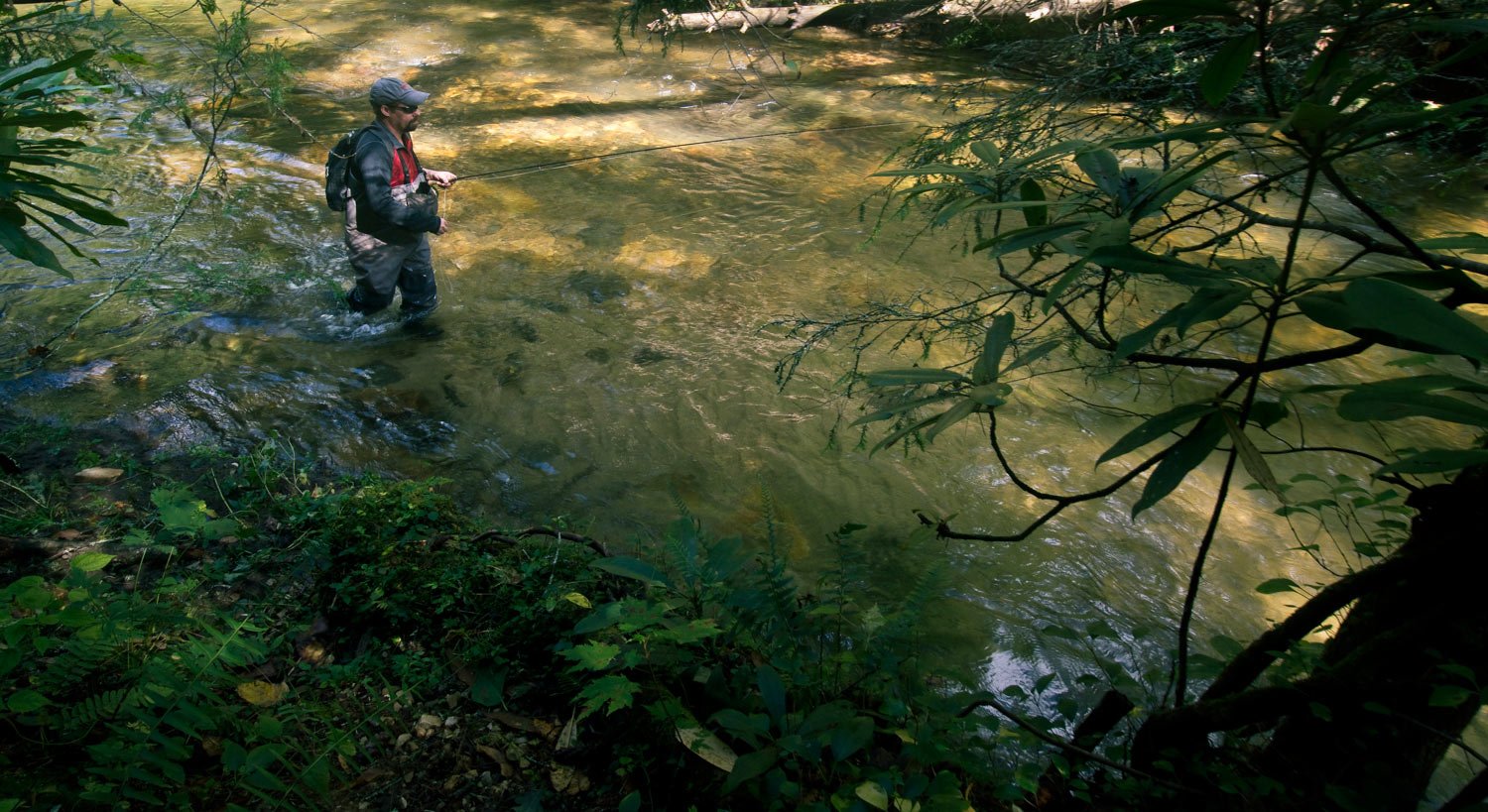
By Jason Tucker
I used to spinner fish for trout a lot.
Much of it was done as a scouting tool in preparation to come back and fly fish, and at times I even clipped the hook off and simply took note where the fish were. It was a great scouting tool, one I have long since abandoned.
In several years of this kind of fishing I began to notice a trend. In my haste to cover water, I often kept wading as I cast. At times I was puzzled as to why a particularly good spot did not yield a fish. I would stop and cast some more, and very often come up with a fish.
Over time a pattern emerged. If I was in motion, I came up blank; if I stopped moving, a fish would strike. I even began to experiment and count the fish I caught while moving and standing still. There was no comparison. Oftentimes fish would follow and not strike if I was in motion, and then strike once I stood still.
I later tested this while fly fishing, using a skunk pattern. I often fish up a stretch of river with dries, and then fish skunks back downstream. Skunks work best with a down and across presentation. Again the pattern emerged– if I was in motion I caught nada, if I stood still, even in a pool I had already disturbed, then I at least had a chance at fish.
Sound moves faster and more efficiently through water than air–it’s science.
We as angler’s also tend to
Read More »Strike Indicators, What Matters to Me
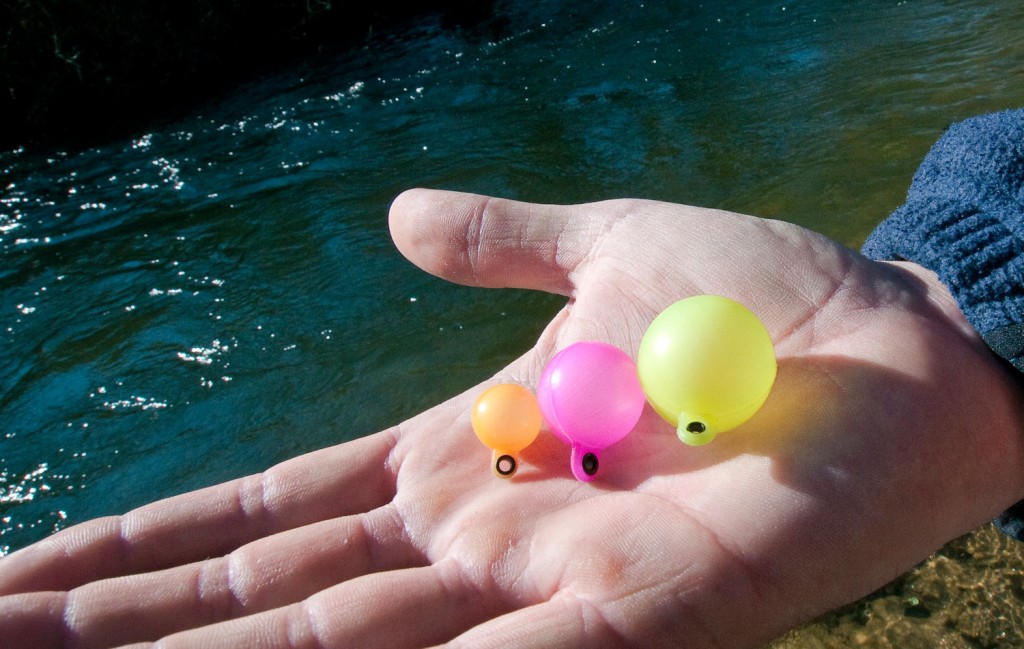
Do Strike Indicators spook fish?
There is a lot of debate over whether strike indicators spook fish. I’m not going to beat around the bush on this one folks. I truly believe that most of the time they don’t. Especially if you rule out calm and slow moving shallow water. Only when I’m dealing with really spooky fish, do I downsize and dull down the color of my strike indicators. The other 80% of the time I think the fish pretty much just find them interesting, possibly a tasty morsel, or just another piece of trash floating over their heads.
What I really think we should be doing is looking at the other side of the coin. In my opinion, we should worry less about spooking fish with our indicators, and worry more about matching the correct size strike indicator to the type of water and rig we’re fishing. That makes much more sense to me, anyway. Now I know there’s lots of you probably saying this is obvious rookie stuff, Kent. I hear you all loud and clear, but bare with me a minute, because I still find myself having to explain to anglers why it’s a good idea to carry different sizes and colors of strike indicators on the water. And as long as I’m doing that, there’s a need for this information to be out there for people to read.
HERE’S HOW I GO ABOUT CHOOSING WHAT STRIKE INDICATORS I USE ON THE WATER.
Read More »